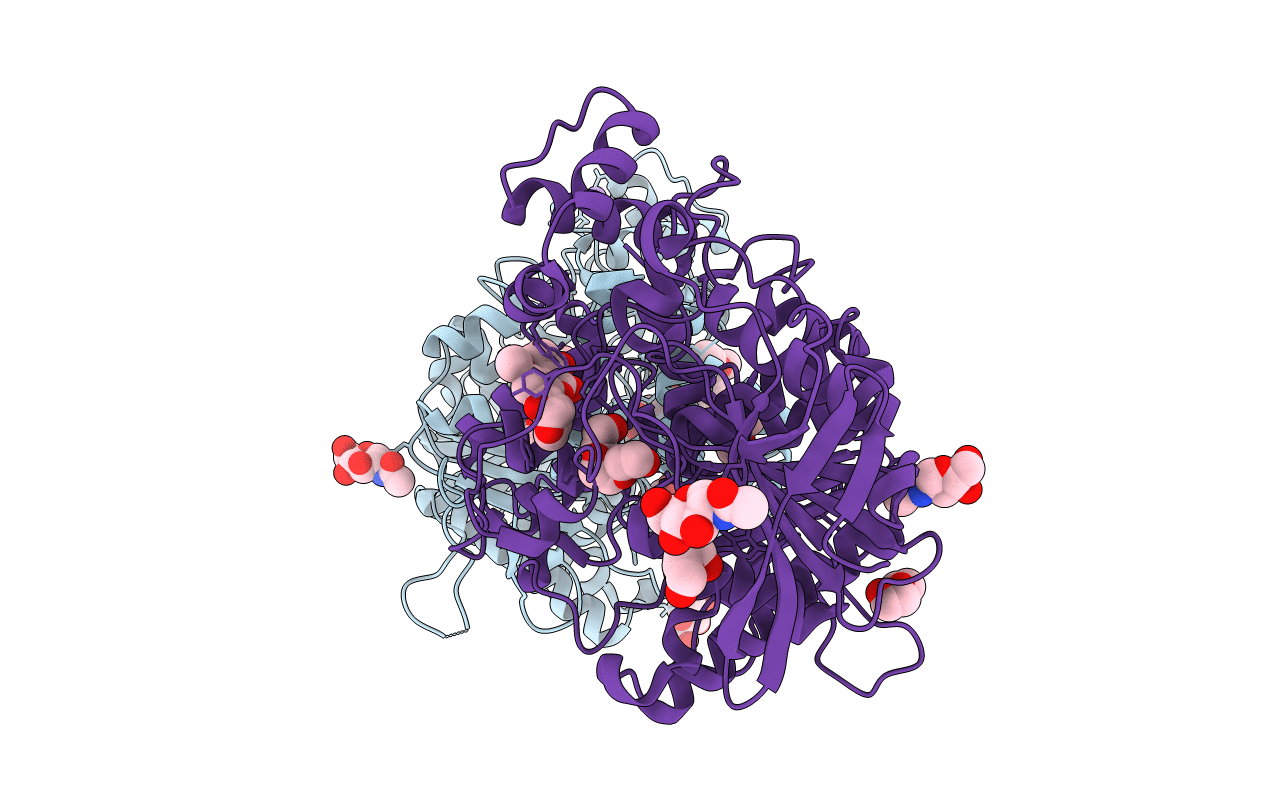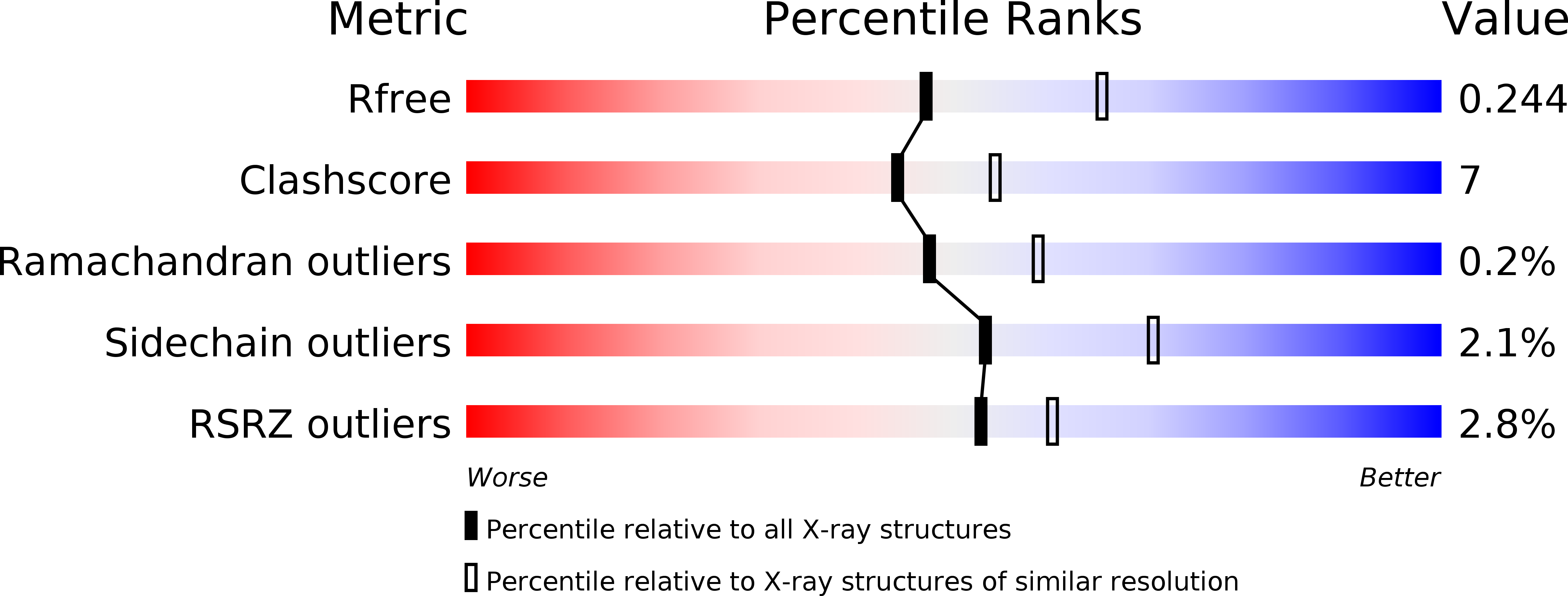
Deposition Date
2010-06-28
Release Date
2011-03-23
Last Version Date
2024-11-13
Entry Detail
PDB ID:
2XI4
Keywords:
Title:
Torpedo californica Acetylcholinesterase in Complex with Aflatoxin B1 (Orthorhombic Space Group)
Biological Source:
Source Organism:
TORPEDO CALIFORNICA (Taxon ID: 7787)
Method Details:
Experimental Method:
Resolution:
2.30 Å
R-Value Free:
0.23
R-Value Work:
0.17
R-Value Observed:
0.18
Space Group:
P 21 21 21


